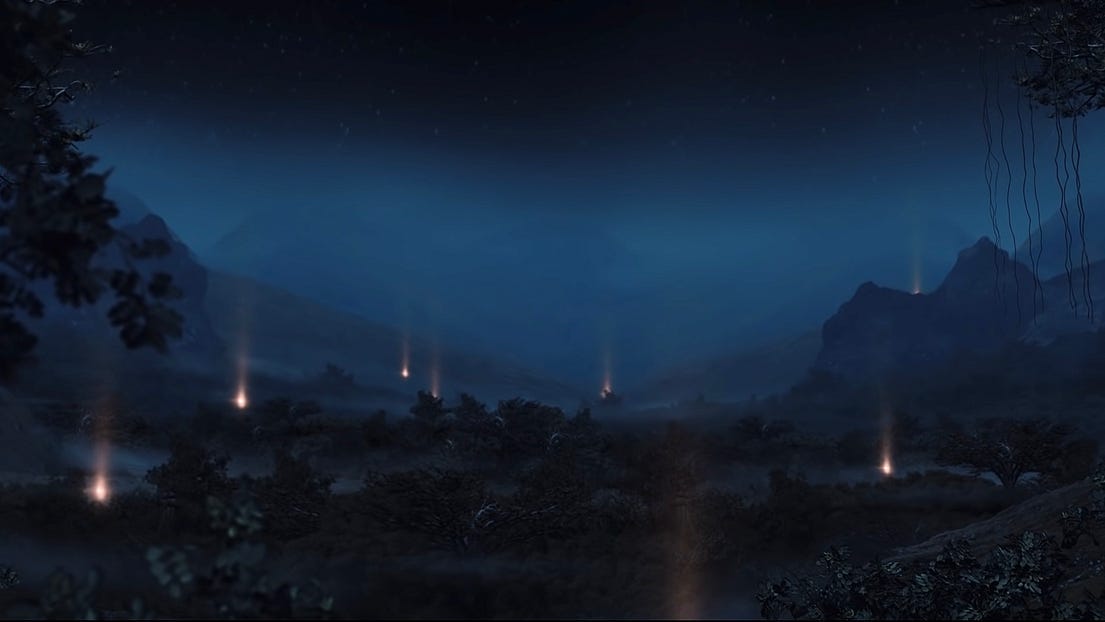When Parting Is Indeed Sweet Sorrow
Two bands I wish I'd known about when they were still a thing
(
one of these bands made me think of you 😉)It’s daunting to play catch-up, but that is exactly what I find myself doing.
I spent my 30s and 40s largely stuck on repeat with the music of my teens and twenties. I have learned that this is pretty typical — academic studies show that most people stop listening to new music sometime in their thirties. Except, I was not happy about it.
I wanted the thrill I felt the first time I heard Cream, Queen, the Pretenders, or Tina Turner. Or the fusion bands like Weather Report and Return to Forever. But it wasn’t happening. New Wave sometimes came close, and I went through my electronica, house, and Euro-dance phases, but I can’t say most of that has had a lasting shelf life. I was not into pop, and rock felt like it had lost its spark.
So, stumbling into this huge scene that had been going on the whole time without getting any notice in the U.S. has been partly like hitting the jackpot and also a source of frustration. I’m traveling back in time, trying to understand what had been going on all those years in an alternate universe. I’ve learned that some of the same genres of music were happening outside the U.S., as were happening here, but with unique twists and some major differences.
Genre definitions can be useful shorthand for telling someone roughly what to expect from a new artist or piece of music, but they can also become shackles. Too many musicians and bands find themselves trapped by genre, sometimes at the hands of their fans, who often don’t want their favorite artists straying from what hooked them in the first place.
It’s axiomatic that the most creative things happen when people stray across preconceived boundaries, whether they are artists, athletes, or scientists. They have to have the courage to do it. Some of the most beautiful songs happen where supposedly different genres collide. And then there are situations where genres don’t exist at all or are just beginning to take form.
While preparing for the upcoming Album of the Month…
Mark Your Calendar for October 1!
The Riff Album of the Month has been a great way for people to make friends, share music, and learn about artists we had not heard of before. Anyone and everyone is invited to join. It’s easy—just use the Zoom link below. You can share comments or just listen in — there is no pressure either way!
…I went back to look at some of Nightwish’s influences and peers. Some of these I already knew, others were new to me. Many of the bands and artists came out of splinter subgenres like gothic metal, doom pop, and shoegaze, as well as the remnants of synth-based New Wave.
The transformative element was the addition of powerful soprano vocals soaring above dark, heavy instrumentation. Some people dubbed this concept “beauty and the beast,” and Nightwish were not the first to experiment with it.
At the same time, partly in rebellion against the self-conscious minimalism of grunge, a new wave of songwriters began drawing on classical approaches to composition, with complex arrangements and dense harmonies. One can hear hints, or more, of Bach, Beethoven, Rachmaninoff, and Orff in the work of groups such as Therion and Haggard. Coupling this sort of composition with the “beauty and the beast” approach to vocals would give rise to true symphonic metal bands like Nightwish, Within Temptation, and Epica.
Here are two bands that I wish I could go back in time to appreciate when they were a thing. Fittingly, both of these songs are from farewell concerts, as though to taunt me. They’re both gorgeous. What genre are they? Gothic? Drone? Shoegaze? Prog rock? The truth is, we don’t need to label them.
Theatre of Tragedy: “Fade” (Live, 2010; from their 2006 album “Storm”) Vocals: Ragnhild “Nell” Sigland
Theatre of Tragedy were active from 1993 through 2010. Sigland joined in 2004, replacing original vocalist Liv Kristine. The band went through various phases, incorporating (and then later dropping) death-metal growls that complemented the female vocals.
In 2010, they announced they were disbanding. They did a farewell tour and were going to memorialize it in a live concert DVD, but their label canceled funding for the DVD. Their fans crowdfunded it instead and also captured the video footage you will see here.
The Gathering: “Travel” (Live, 2014; from their 1998 album “How to Measure a Planet”)
Founded in 1989, The Gathering traverse many different genres, being variously characterized as gothic, death-metal, doom-pop, progressive rock, and shoegaze, among others. They had several female lead vocalists but hit their peak with Anneke van Giersbergen from 1994 through 2007.
Van Giersbergen is regarded by many as the godmother of symphonic metal. Other top vocalists, including Sharon den Adel, Floor Jansen, Simone Simons, and Asami, cite her as an influence. She left The Gathering to seek more life balance, though she continues to do collaborations and joint appearances with many of those artists.
This is from the band’s 25th anniversary concert, where their four most influential lead vocalists appeared (including Bart Smits, their original and only male lead singer). Toward the song's end, they gather on stage for some mesmerizing harmonies.
The concert's audio was released as a live album; in a weird echo of the farewell concert by Theater of Tragedy, the video was captured through an organized collaboration by a dozen or so fans. There is a link to the full concert in the notes to this video.




